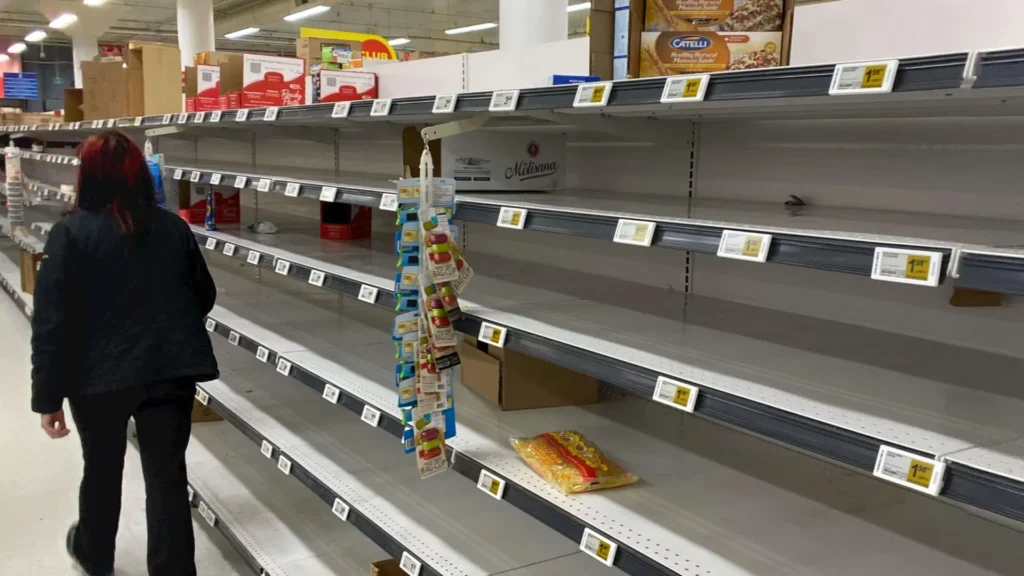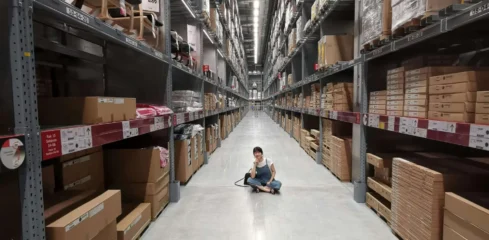Have you ever shopped online and clicked “Add To Cart” only to be met with a dreaded “out of stock”? While this is a frustrating experience for customers, the frustration is doubled for you, as the business owner. Every oversold or out-of-stock item leaves customers disappointed, increasing the chance of losing that sale (or customer) completely. Fortunately, we’ve got the secrets to preventing these issues from occurring.
By mastering your stock levels, you’ll not only avoid disappointing customers but also boost your bottom line.
Read more: How to Prevent Oversolds and StockoutsOversolds and Stockouts: What Are They?
While the two tend to go hand-in-hand, it’s important to understand the difference between oversolds and stock outs, as they represent the same issue from different perspectives: the customer’s and the business’.
From the Customer’s Perspective: Oversold
An example of an oversold item would be our previous example: ordering an item online only to later receive an email that it’s no longer available. Essentially, there are more orders placed for an item than there are units actually in stock. This leads to canceled orders, frustrated customers, and potential damage to your brand image and trust, as they will likely turn to your competitors.
From the Business’ Perspective: Stockout
Now, let’s shift perspectives and imagine empty shelves in your warehouse. This scenario represents a stockout, meaning the product simply isn’t available on your warehouse shelves. Plainly speaking, it is not “in stock.” This occurs when demand outpaces your inventory, or when you’re not aware of the stock counts for your products, leaving you with missed sales opportunities and potentially frustrated employees scrambling to manage the customer’s replacement request and fulfill an alternate order. Similar to oversolds, stockouts can harm your brand perception and seller score, leading to lost revenue.
These issues are bad enough when it’s a stand-alone event, but that’s usually not the case. Oversold items often snowball into continuous stockouts if inventory isn’t accurately tracked. Inaccurate data fuels both issues, creating a vicious cycle of disappointment and lost profits.
7% to 25% of customers faced with a stockout will continue shopping, but won‘t buy a substitute for their desired item at the store.
21% to 43% will actually go to another store to buy the item.
That’s why preventing both is crucial. By keeping stock levels optimal, you avoid frustrated customers, lost sales, and the operational headache of managing these inventory mishaps.
Before we reveal how you can prevent these, let’s talk more about why they occur.
What Causes Oversolds and Stockouts?
- Inaccurate inventory data. The foundation of good stock management is accurate data. Unfortunately, manual counting done intermittently is prone to errors, leading to phantom products and shortages. This discrepancy fuels both oversold frustration and stock-out disappointment.
- Incorrect reorder points. A reorder point is the level of inventory you choose to indicate when it’s time to order new stock. But, when your reorder point is inaccurate, it can cause you to run out of stock before anticipated. Fortunately, Finale offers a reorder point control system to help you schedule and automate reordering.
- Lack of minimum and maximum inventory. Safety stock, or min/max inventory, acts as a buffer against unexpected demand surges or supplier delays. Without it, even minor hiccups can trigger stockouts, leaving you scrambling to fulfill orders. This is the simplest method of inventory control reordering and is easy to set up with Finale with two static inputs:
- The “Min” value represents a stock level that triggers a reorder
- The “Max” value represents a new targeted stock level following the reorder.
- Communication silos. Miscommunication between departments can be disastrous. Sales promising what inventory can’t deliver sets the stage for oversold situations, while purchasing not communicating delays can lead to stockouts. Transparent communication is key.
These problems often occur as a result of outdated inventory management. Relying on manual processes and spreadsheets makes it difficult to track inventory in real-time, while increasing the risk of oversolds and stockouts through human error. That’s where modern inventory management softwares streamline processes and provide real-time data that empower informed business decisions.
So, how can you prevent these errors and, consequently, prevent oversolds and stockouts?
Strategies for Oversold and Stockout Prevention
1. Demand Forecasting
Accurate demand forecasting, the art of predicting future sales based on historical sales trends, empowers you to stock the right items at the right time, eliminating both oversold woes and stockout frustration.
- Leverage sales velocity reporting: Leveraged against reordering technology, you can analyze past data to identify trends in purchasing, inventory, and reordering. This historical foundation provides a solid base for future predictions. Select different timeframes to see how the order rates change.
- Multichannel updates: Stay updated on stocks across all sales channels. When looking at potential solutions, know that some systems update every 30 mins, hour or even every 24 hours. Instead, be on the lookout for systems that offer real-time syncs. These updates will reflect the most accurate, up-to-date inventory levels across all sales channels and within your warehouse(s) concurrently.
- Remember promotional planning: Upcoming sales and marketing campaigns can dramatically spike demand. Factor these events into your forecast to avoid being caught off guard. Finale helps you hold inventory aside to make sure you’re set for your upcoming event without impacting ongoing sales.
- Picture this: you know that 100 units are available, and 40 units need to be held for a specific promotion. With Finale, your inventory will reflect 60 units available to the sales channel until you’re ready, making sure you have what you need – when you need it.
Manual forecasting can be tedious and prone to human error. Finale Inventory’s demand forecasting technologies automate this process by leveraging historical sales velocity data and promotional plans to generate reliable forecasts. This allows you to focus on strategic decision-making while the software ensures your inventory aligns with predicted demand.
2. Structured Inventory Management and Barcoding
Inventory data is the lifeblood of accurate forecasting and optimal stock levels, but only if it’s accurate. Gaining that level of accuracy requires some discipline, as well as process, to make sure you’re getting it right.
- Regular cycle counts and stock takes: While you shouldn’t rely solely on manual counts, it’s also not recommended to rely exclusively on software data. Conduct regular physical inventory counts (cycle counts) and complete full stock takes periodically for a more detailed QA/QC check. Doing so with a barcode scanner will cut the process down from days to hours.
- Reorder points: Set reorder points within your inventory system. These predefined inventory levels will trigger notifications to reissue a purchase order, while some systems will automatically create purchase orders for you. Either way, reorder points acts as a buffer to ensure you restock before hitting zero and help prevent stockouts. For example, if your widget reorder point is 20 units, an order automatically triggers when inventory falls to that level.
- Safety stock: Beyond reorder points, consider implementing safety stock, an additional buffer to handle unexpected demand surges or supplier delays. This extra cushion provides peace of mind and ensures you’re prepared for unforeseen circumstances. For example, you might maintain a safety stock of 5 additional widgets on top of your reorder point.
What’s important to note about the above is that merely having a system won’t improve your oversolds. Leveraging the right tool with the right feature set to protect your inventory is what’s key to a structured inventory management approach.
Why a tried and true inventory management system? Manual data entry is notorious for errors, leading to inaccurate inventory data and fueling both oversold and stock-out situations. This is where barcoding technology steps in as your champion of speed and accuracy, beyond the beneficial syncs of the IMS (inventory management system). By scanning barcodes instead of manually entering data, you ensure precision and gain valuable insights into stock levels, minimizing the risk of inventory mishaps.
Integrating your barcoding technology with your IMS takes this one step further. Finale offers integrated barcoding and IMS solutions, streamlining these processes. You can verify purchase orders upon receipt, automate cycle counts, track reorder points and safety stock, freeing up your time for strategic decisions while ensuring data accuracy and optimal stock levels.
3. Communication and Collaboration
Like the hallmark of any relationship and team, poor communication can be the kiss of death between your warehouse and sales teams. But, with a cohesive tech stack, you can get all departments on the same page. Picture this ideal scenario: sales promising realistic availability, purchasing anticipating demand changes, and the warehouse efficiently fulfilling orders. This collaboration fosters transparency and minimizes the risk of oversold or stockout situations.
- Real-time inventory visibility: Finale offers an IMS that empowers all teams with real-time access to accurate inventory data. This shared visibility fosters understanding and facilitates informed decision-making across departments.
- Shared platforms and dashboards: Utilize shared platforms and custom inventory reports that provide a consolidated view of stock levels, sales trends, and purchase orders. This transparency promotes collaboration and ensures everyone is on the same page.
By implementing these strategies across demand forecasting, inventory management, communication, and barcoding technology, you can transform your inventory into a well-oiled machine. Accurate data, reliable forecasting, open communication, and precise tracking are your keys to unlocking optimal stock levels and saying goodbye to oversells and stockouts forever.
Schedule a demo to learn more about inventory management, or join our newsletter!







